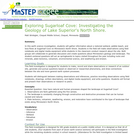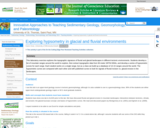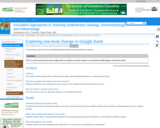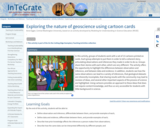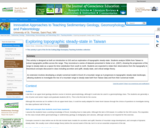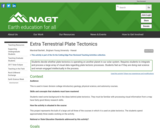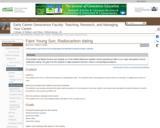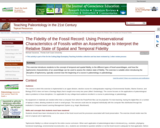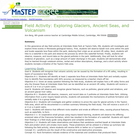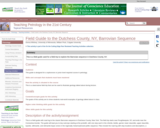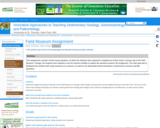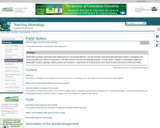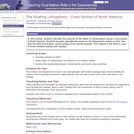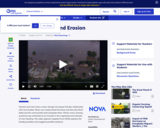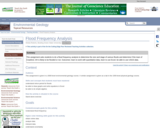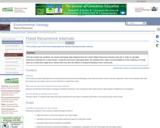This exercise introduces students to the concept of temporal and spatial fidelity, to the different types of fossil assemblages, and how the taphonomic characteristics of an assemblage can be used to assess the relative state of fidelity. The exercise is suitable when introducing the discipline of taphonomy, typically covered near the beginning of a course in paleontology or paleobiology.
Because most universities lack appropriate collections of fossils, particularly collections from assemblages with unusual states of preservation, this exercise provides digital images of fossils from a Middle Devonian obrution deposit (or smothered assemblage) found within thin bedded limestones of the Hamilton Group of western New York State.
Students are asked to make predictions concerning the relative states of preservation likely to be found in life assemblages (biocoenoses) and death assemblages (thanatocoenoses and taphocoenoses). A biocoenosis is an assemblage that contains virtually all of the species that existed when the community was alive. A thanatocoenosis is a death assemblage where all the fossils represented existed within the community, but not all community members are present as fossils (species are missing). Finally, a taphocoenosis is an assemblage where not all species present in the community are represented as fossils, and not all the fossil species within the assemblage lived in the community (i.e., there is temporal or spatial mixing). Students are then presented with a PowerPoint presentation of the Hamilton Group strata, the limestones possessing the unusual fossil assemblage, and finally images of fossils with their preservational characteristics highlighted. The slides are annotated to provide observational descriptions and not interpretations. The exercise works best with students working in small groups with each group supplied with a laptop containing the PowerPoint presentation. Finally, each group is asked to interpret the assemblage type represented (bio-, thanato-, or taphocoenosis) and present a cogent argument citing supportive preservational evidence. (Because the assemblage is created through obrution, the assemblage is correctly interpreted as a thanatocoenosis â the fossils present were found within the community with many individuals preserved in life position and with behaviors represented; not all species in the community, however, are preserved as fossils.)
If time allows, students could be asked to make predictions concerning the preservational characteristics expected for each assemblage type in advance of the exercise. (A table is attached that I use to help frame their predictions.) Their interpretation and evidential argument could be written up as a short essay. I've asked students to do this individually and other times as a collaborative writing assignment for the group.
Once the correct assemblage interpretation is revealed to the students, they could be asked to speculate about the mechanism leading to this style of preservation (i.e., recognizing it as an obrution deposit). A few figures are provided that are helpful in explaining obrution.
The following files are uploaded as supportive teaching materials:
1. Discussion Assemblage Types.doc: Notes to guide a discussion to acquire predictions for taphonomic characteristics for each assemblage type.
2. Fossil Assemblages Exercise.ppt: PowerPoint presentation that describes the unknown fossil assemblage.
3. Exercise Assemblage Fidelity Assignment.doc: The handout provided students describing the exercise.
4. Obrution Deposits.ppt: PowerPoint presentation explaining obrution deposits.
